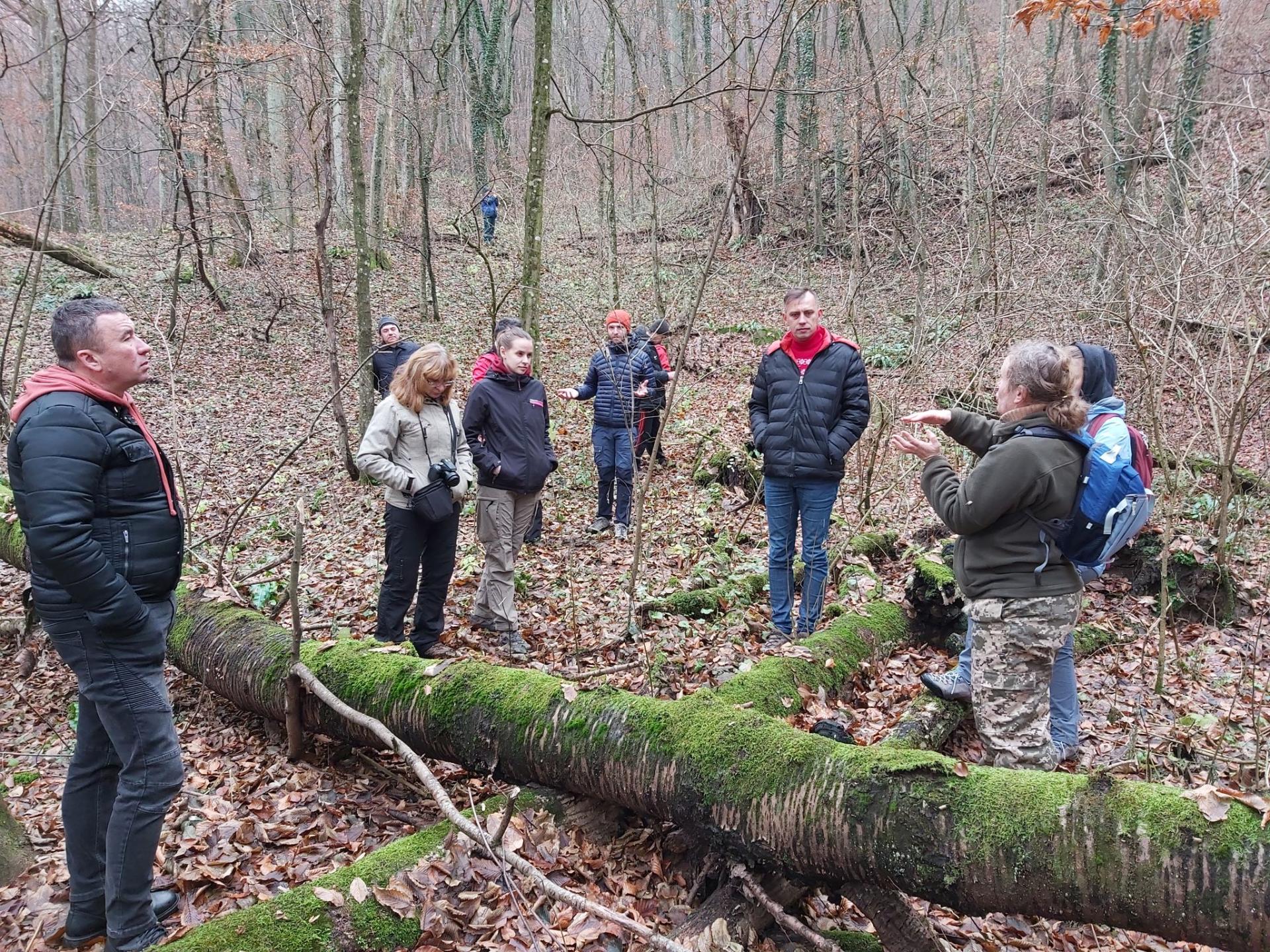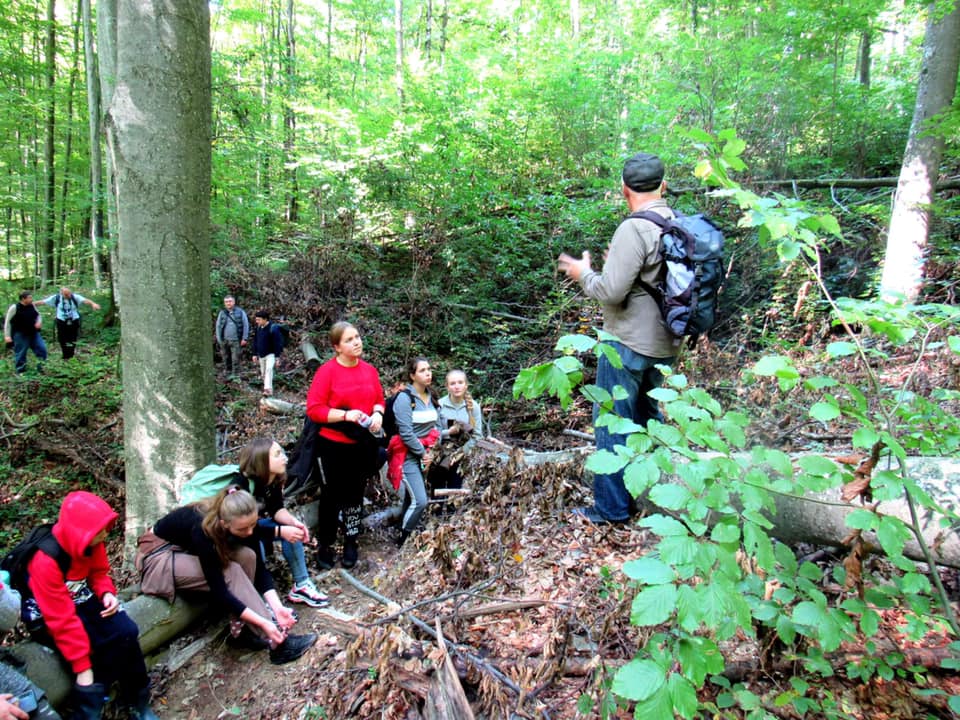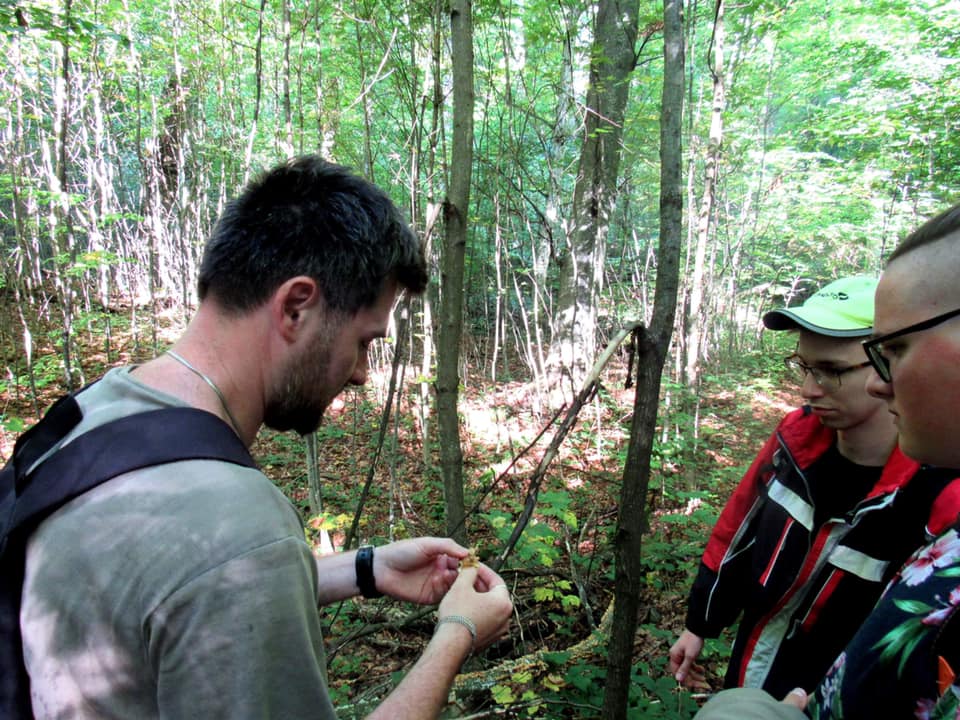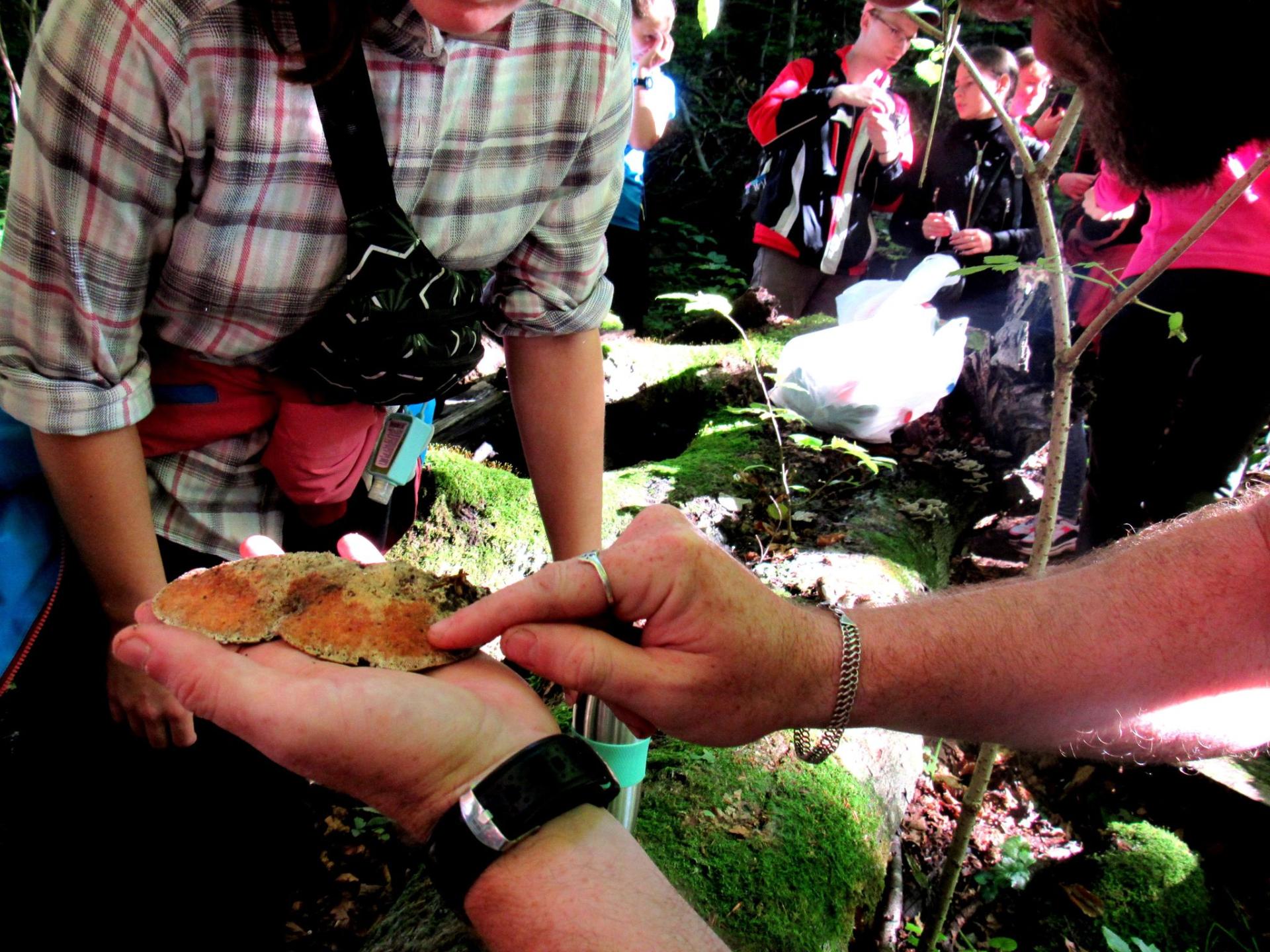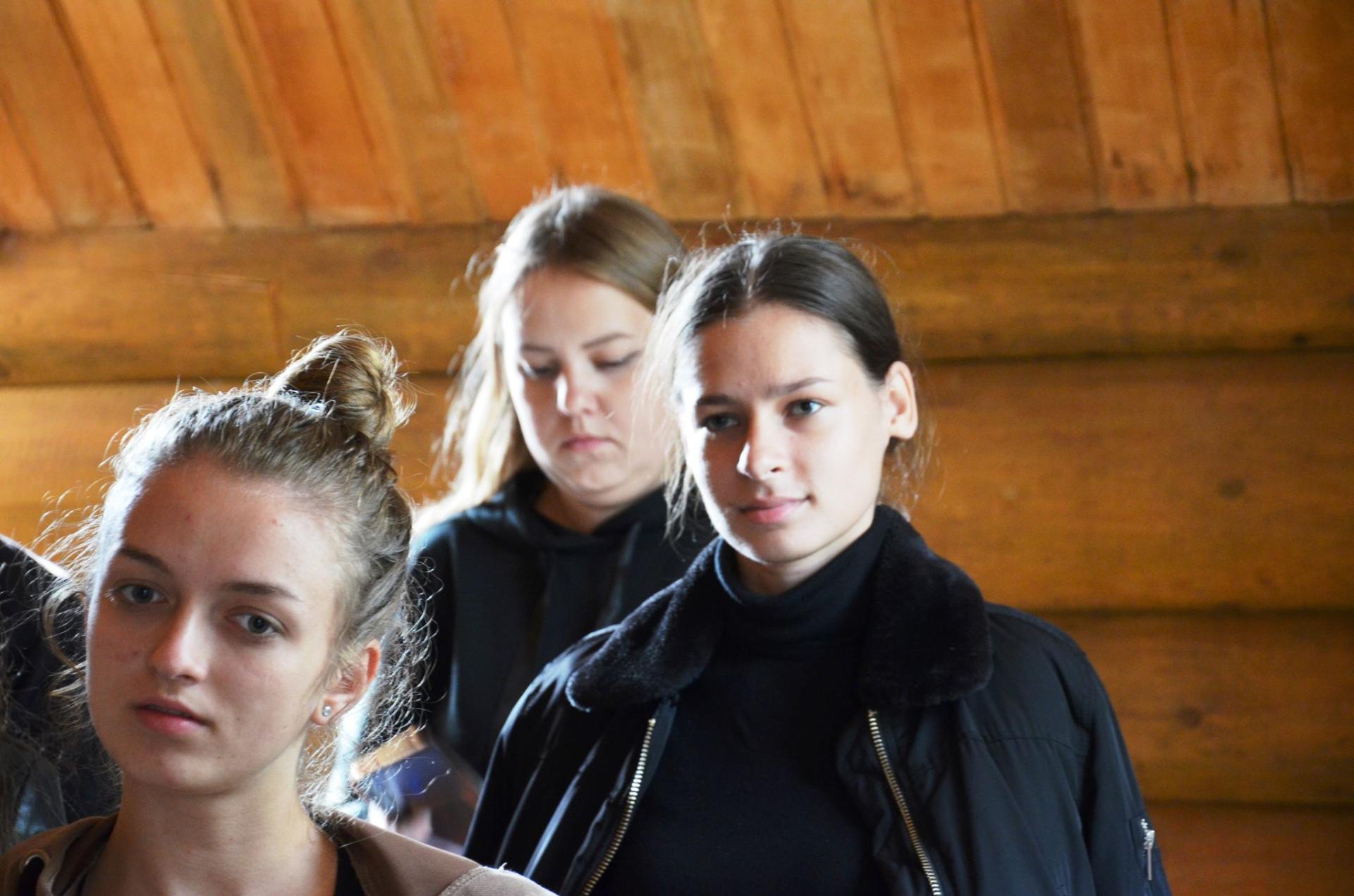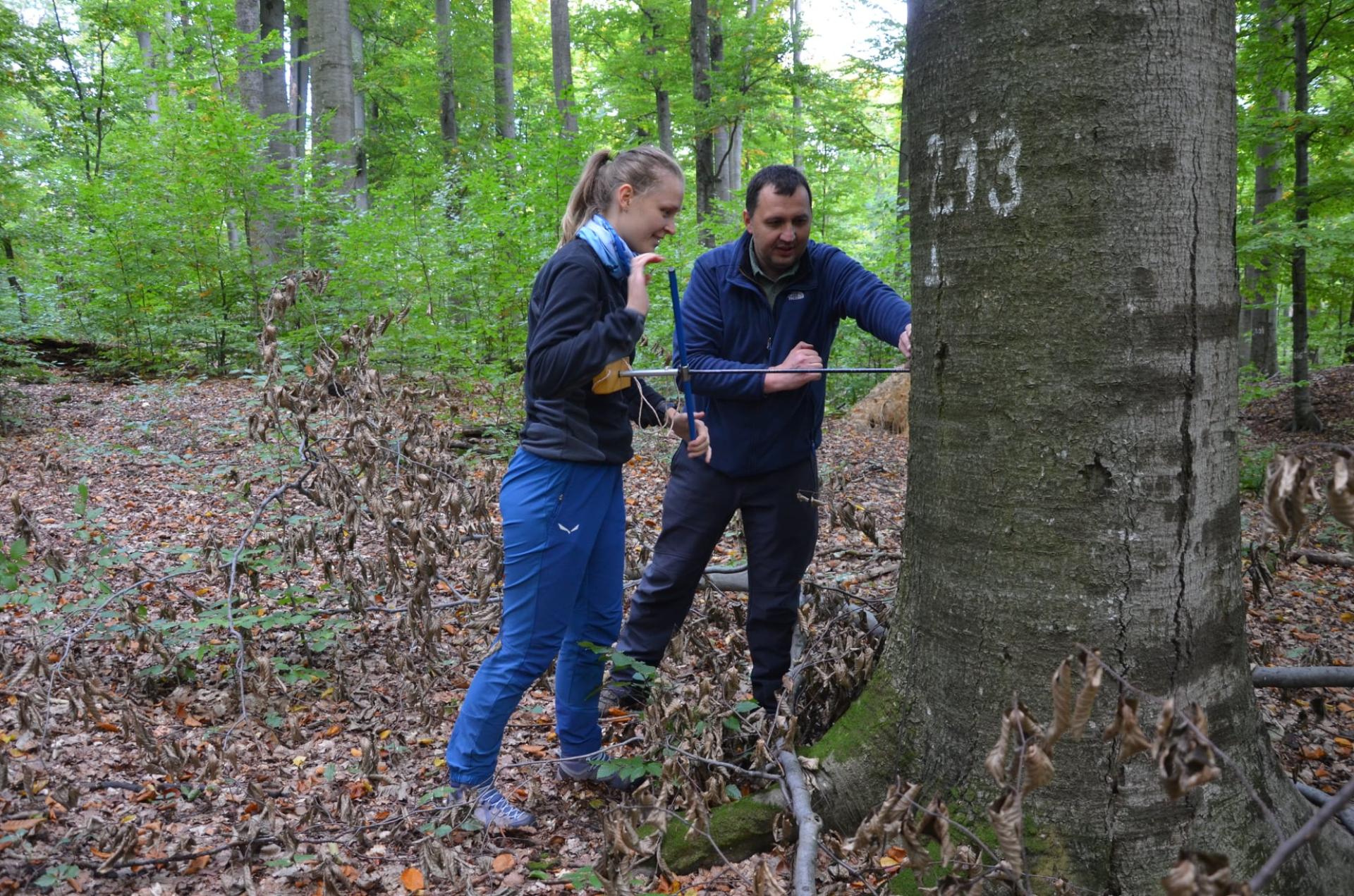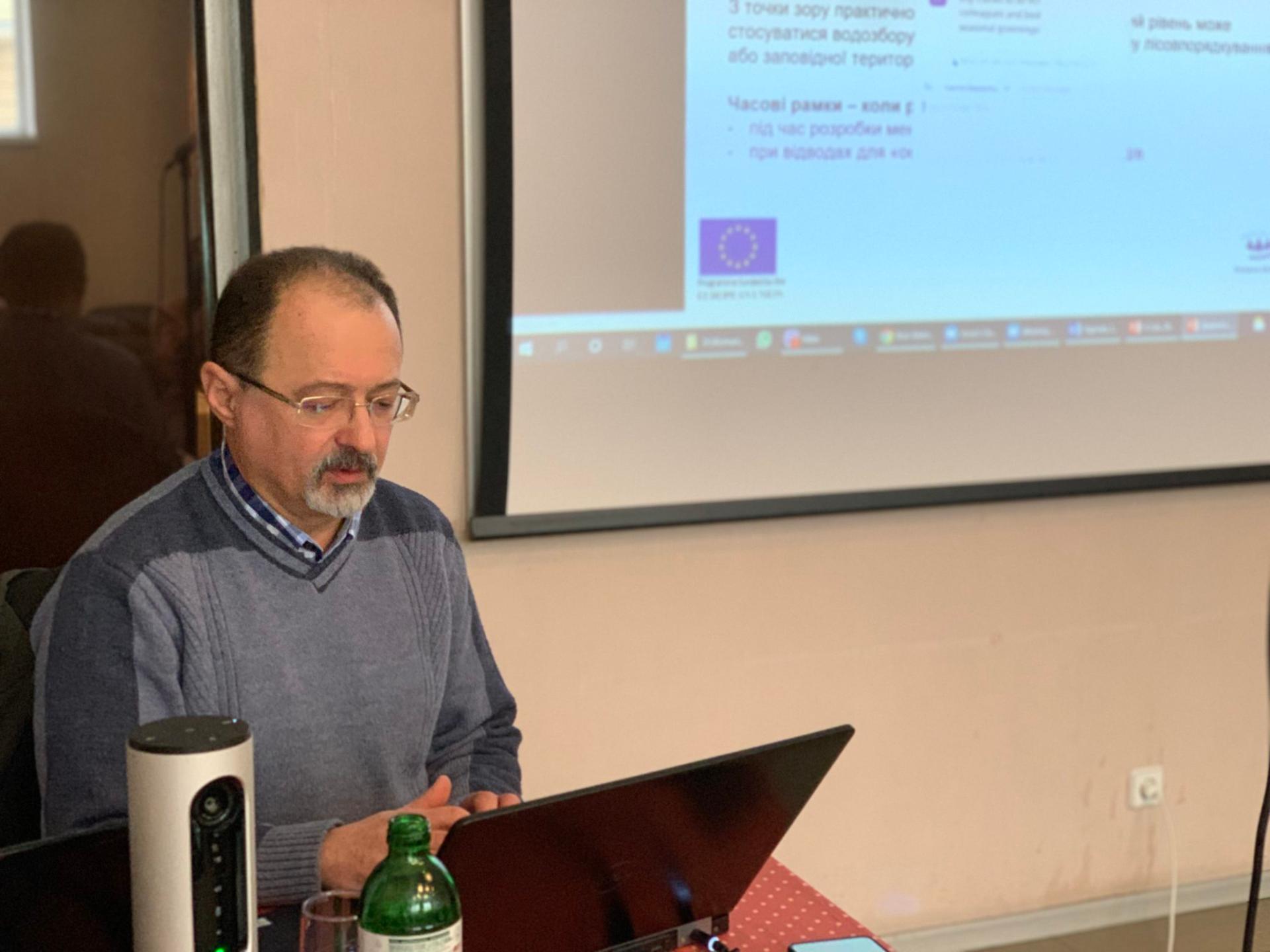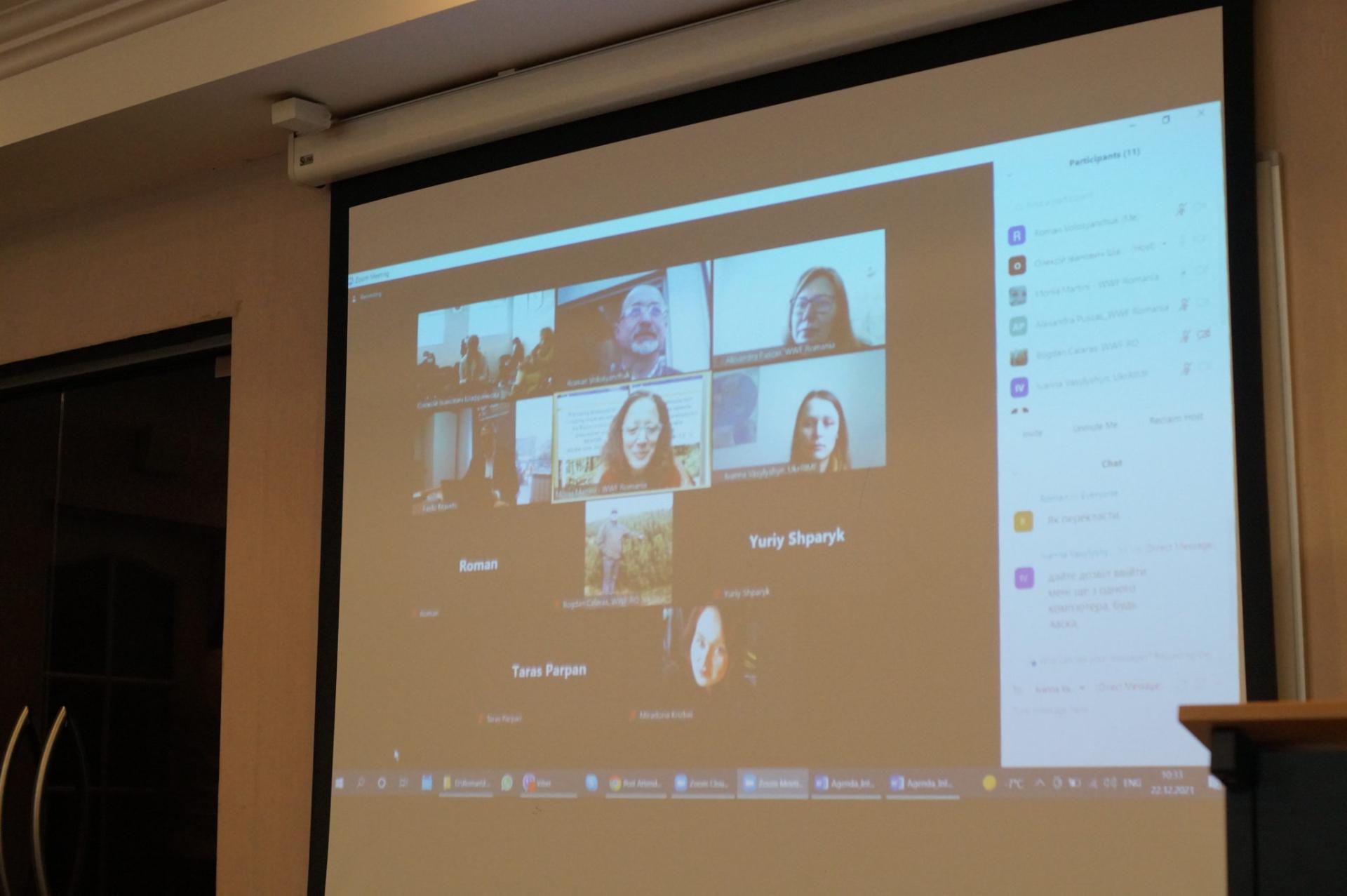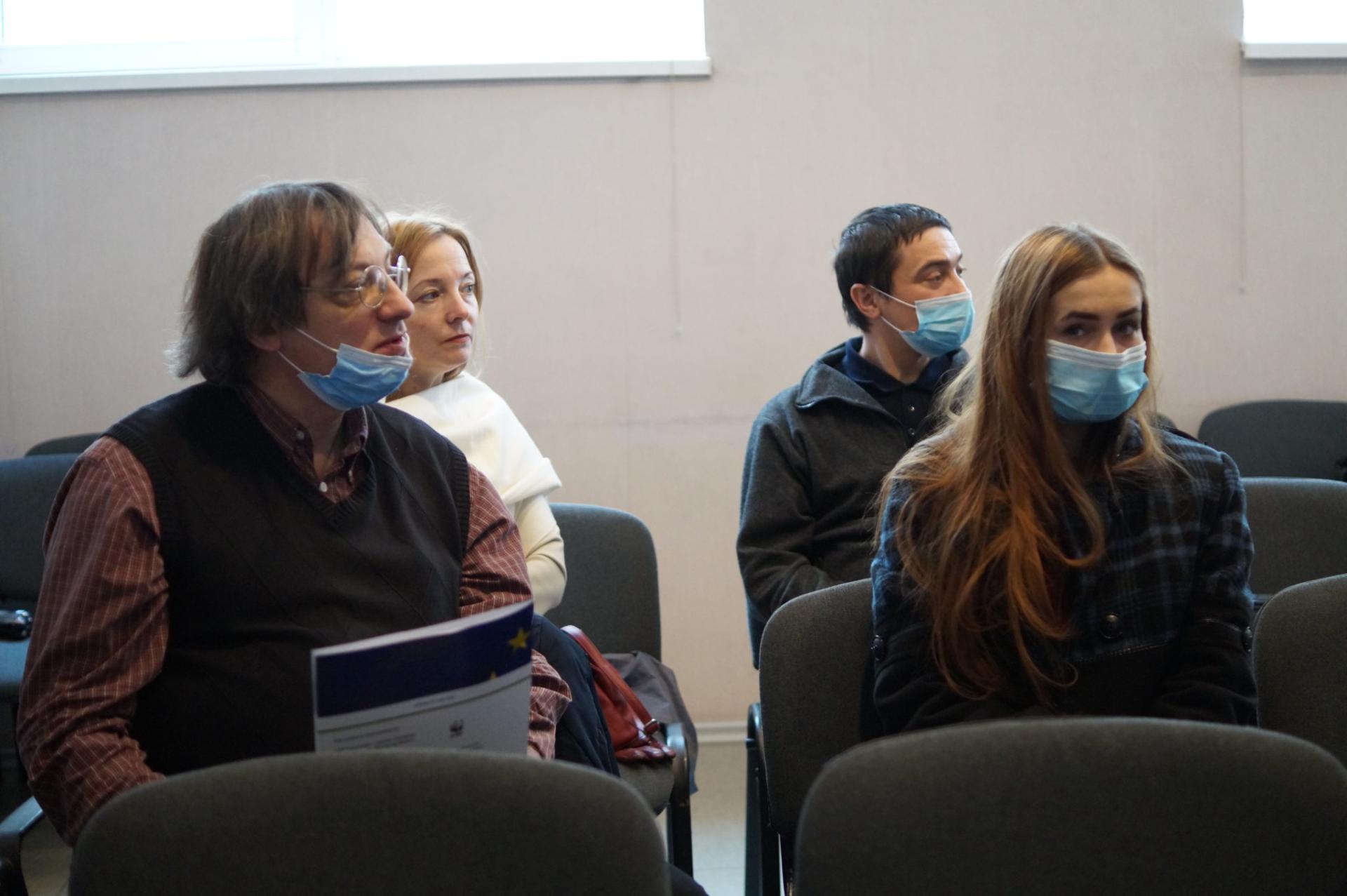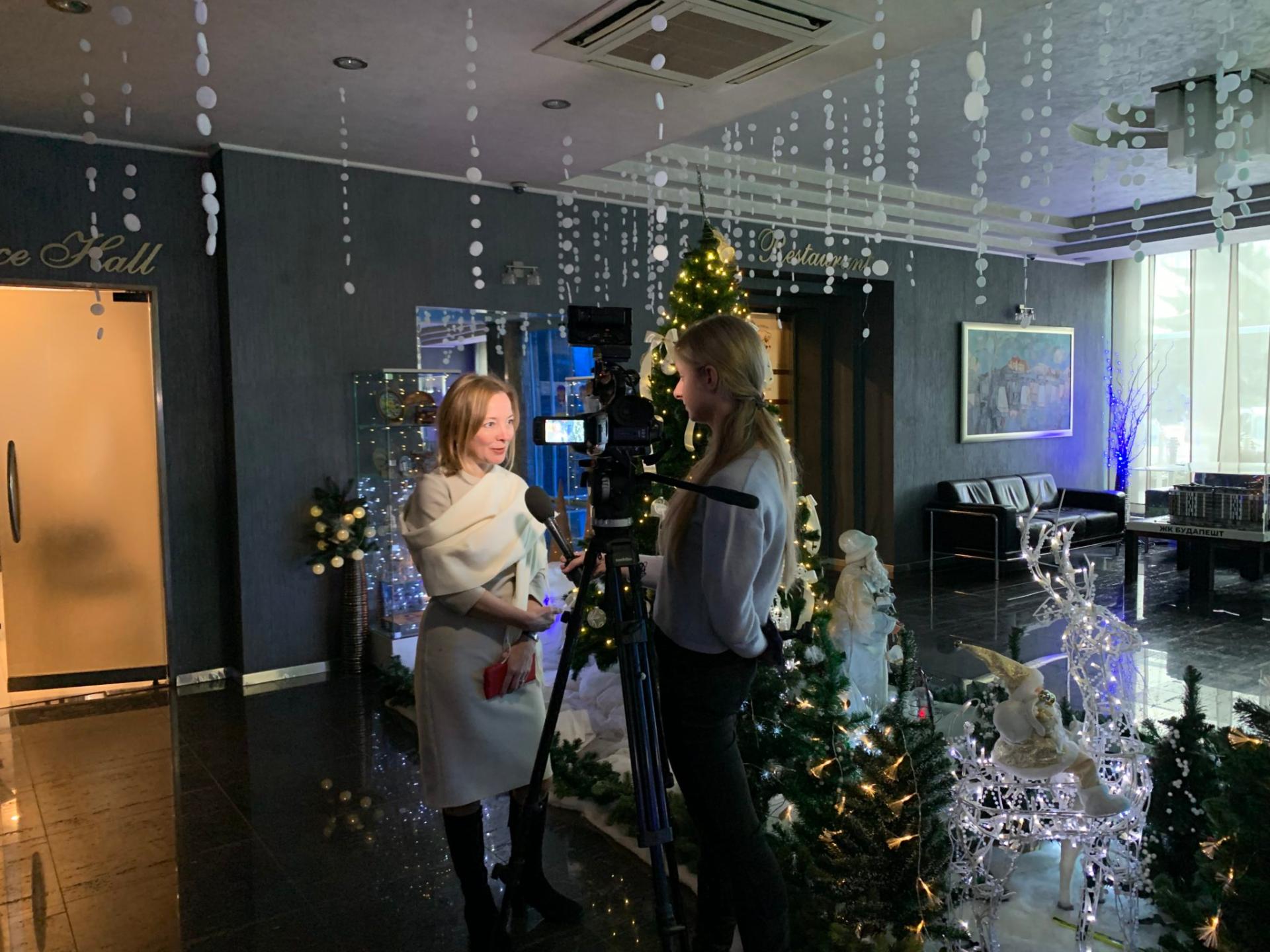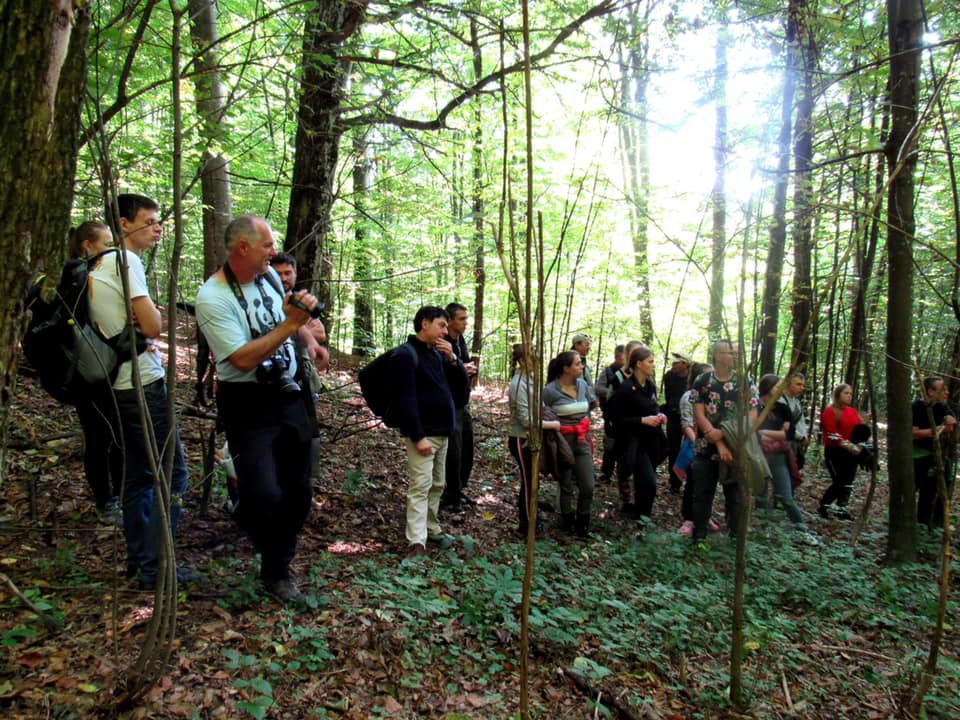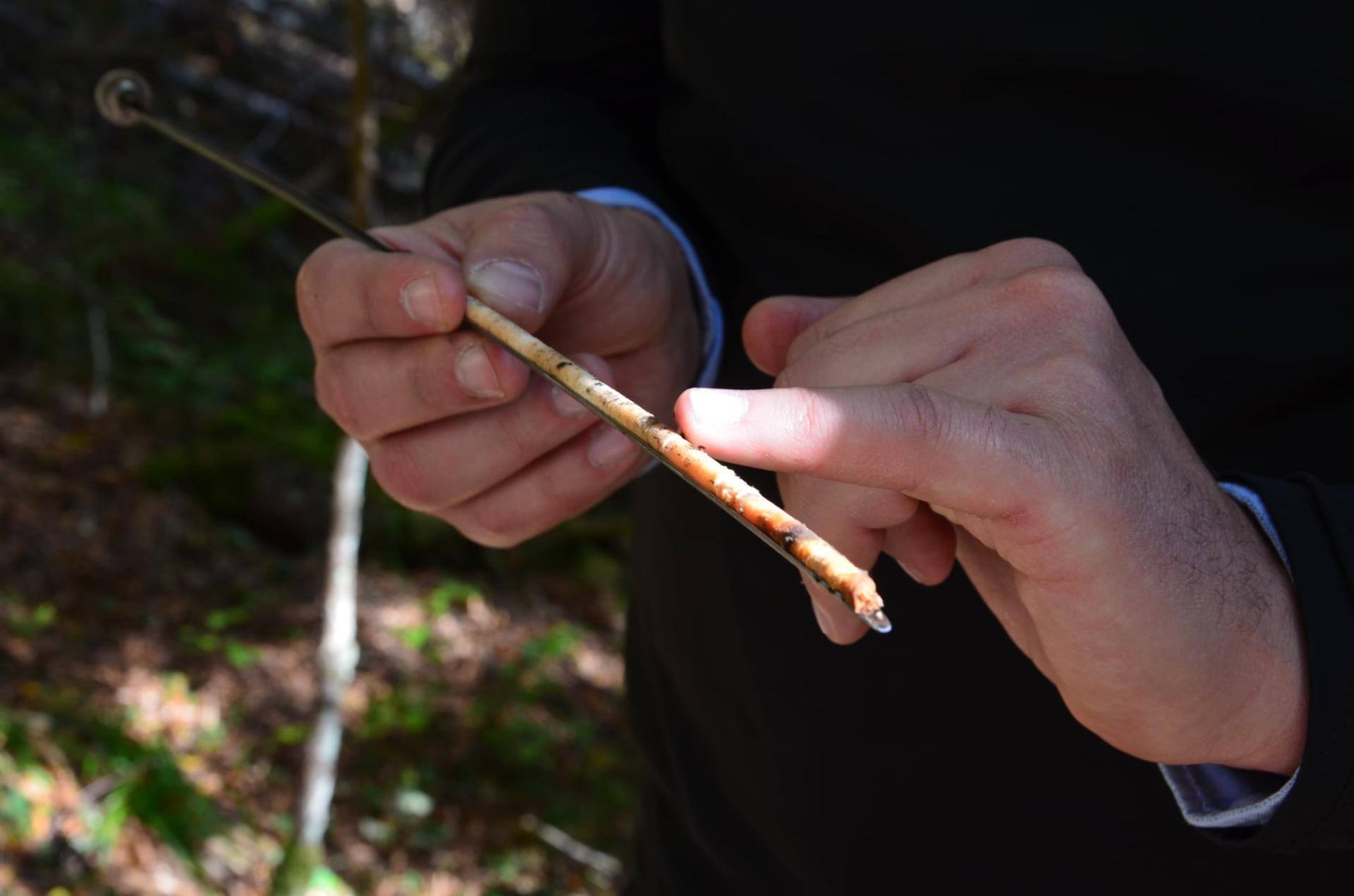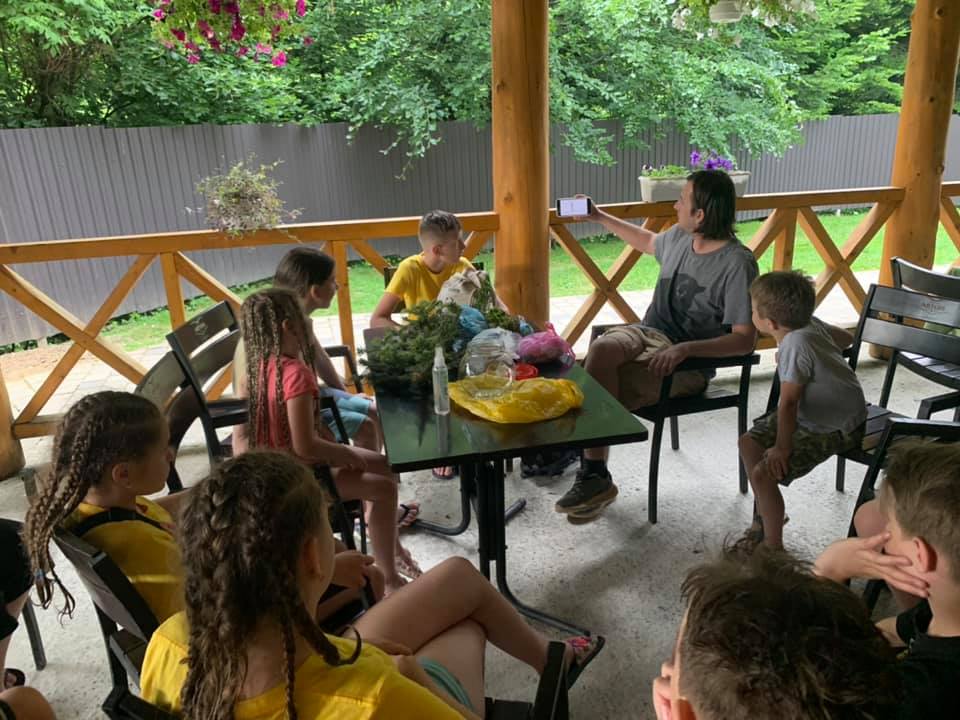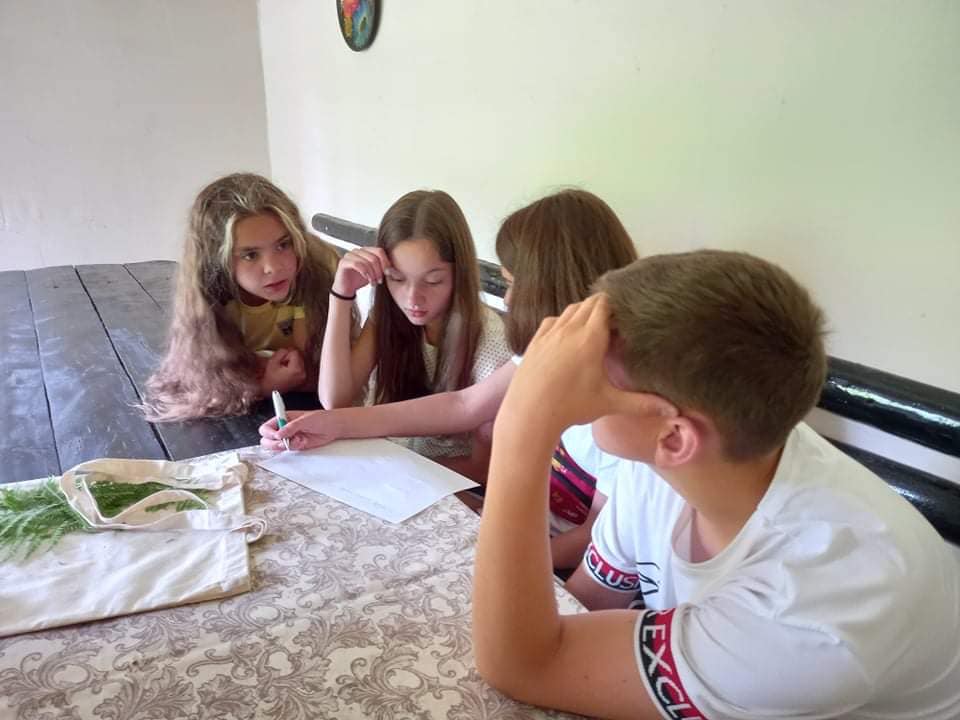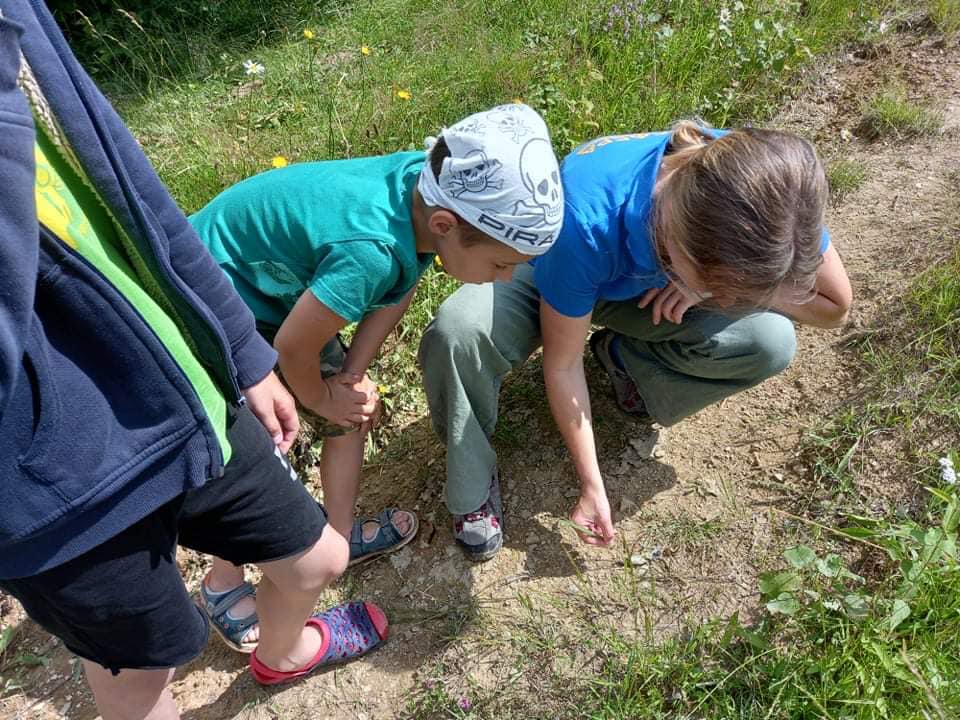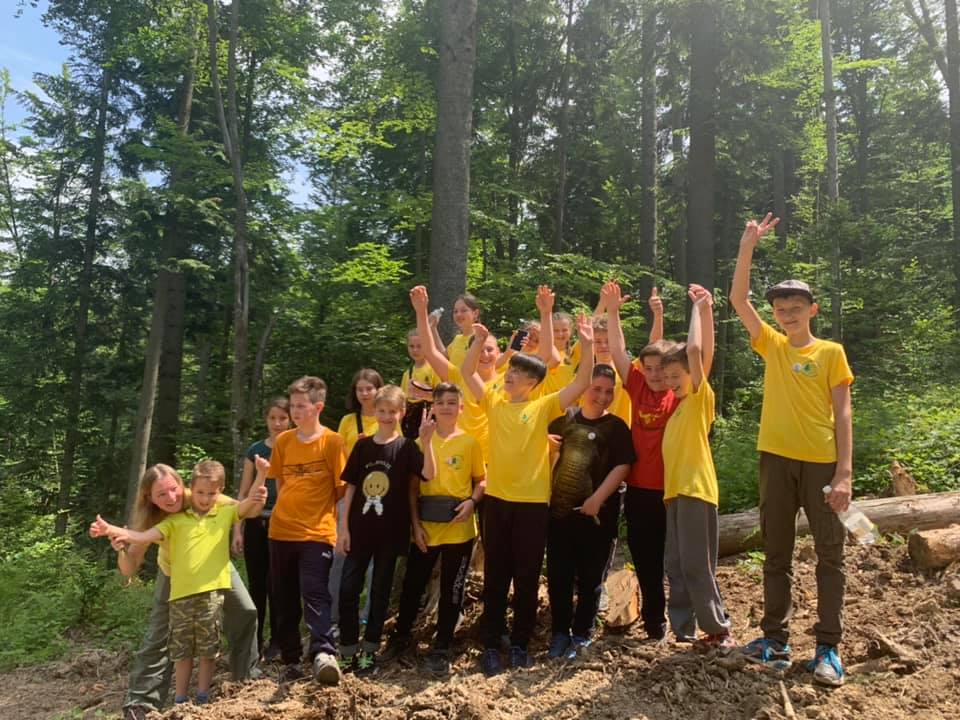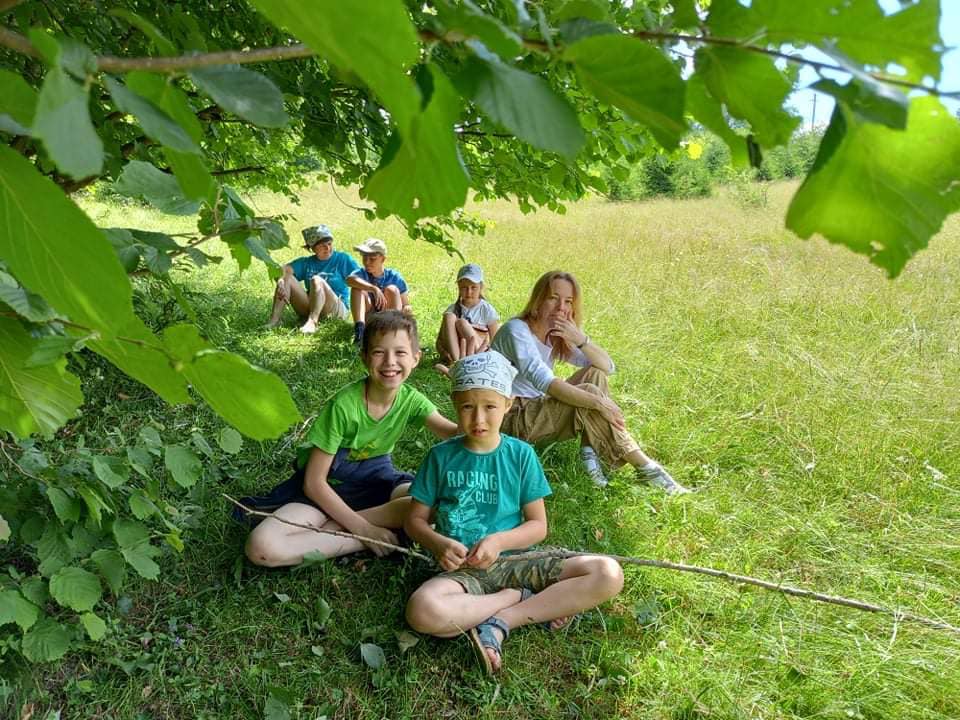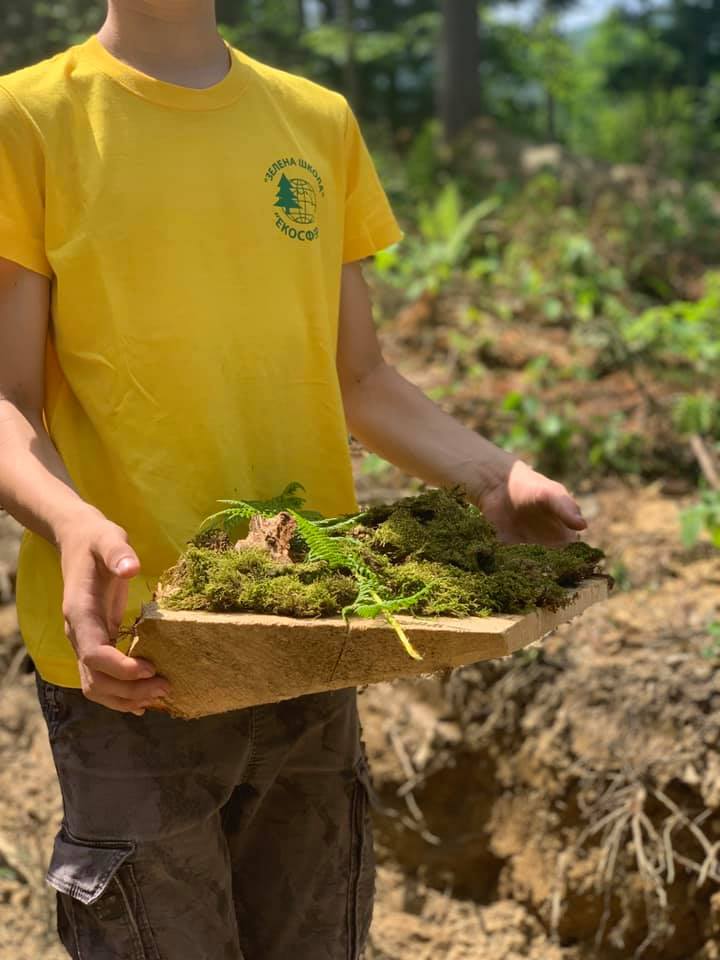RESFOR (2soft/1.2/13)
Basic information
Project Title
RESFOR (2soft/1.2/13)
Full project title
Promote deadwood for resilient forests in the Romanian-Ukrainian cross border region
Category
Reconnecting with nature
Project Description
Deadwood is an important element of forest ecosystems. However, deadwood management is a relatively new concept, most often not understood in practice. The aim of the project is to contribute to sustainable development of the cross-border Romania and Ukraine region via research supporting forest productivity, natural regeneration, biodiversity conservation, increasing resilience to climate change and improving the provision of ecosystem services to local communities and the public at large.
Geographical Scope
Cross-border/international
Project Region
CROSS-BORDER/INTERNATIONAL: Romania, Ukraine
Urban or rural issues
Mainly rural
Physical or other transformations
It refers to other types of transformations (soft investment)
EU Programme or fund
Yes
Which funds
Other
Other Funds
Romania-Ukraine <br />
ENI CBC 2014-2020
Description of the project
Summary
RESFOR is a trans-boundary research project in the forestry domain with the aim to contribute to sustainable economic development of the cross-border Romania and Ukraine region via research and cooperation for developing harmonized forestry practices, aimed at increasing long term productivity of forests, their climate change resilience, and biodiversity conservation.
Target groups in RO and UA project area:
▪ Research and educational institutions
▪ State, communal and private forest administrations
▪ Protected areas' administrators
▪ Wood harvesting business
▪ Sectoral and local authorities
▪ Local communities
▪ NGOs
Project specific objectives:
▪ To enable framework conditions for cooperation, innovation and research on harmonized responsible forestry practices for deadwood management.
▪ To achieve acknowledgment on the importance of deadwood management, and to demonstrate an innovative approach for increasing forest resilience by implementing best practices for deadwood management in production forests.
▪ To ensure promotion and sustainability of the project research results, via building capacity and expertise of final beneficiaries, advocacy work, and creating preconditions for research continuation.
Achieved results:
✔ A transboundary network of researchers and experts (NRE) established in the project area in order to ensure long-term cooperation in the domain of responsible forest management.
✔ A joint RO-UA research report on deadwood and sustainable management of forest ecosystems in the project area elaborated in a participatory process with the NRE members.
✔ Improved knowledge and expertise of key project stakeholders in the project area concerning the management of deadwood and the responsible management of forests.
✔ Enabled necessary conditions for long-term scientific cooperation and research on sustainable forest management and particularly deadwood management in RO and UA.
Target groups in RO and UA project area:
▪ Research and educational institutions
▪ State, communal and private forest administrations
▪ Protected areas' administrators
▪ Wood harvesting business
▪ Sectoral and local authorities
▪ Local communities
▪ NGOs
Project specific objectives:
▪ To enable framework conditions for cooperation, innovation and research on harmonized responsible forestry practices for deadwood management.
▪ To achieve acknowledgment on the importance of deadwood management, and to demonstrate an innovative approach for increasing forest resilience by implementing best practices for deadwood management in production forests.
▪ To ensure promotion and sustainability of the project research results, via building capacity and expertise of final beneficiaries, advocacy work, and creating preconditions for research continuation.
Achieved results:
✔ A transboundary network of researchers and experts (NRE) established in the project area in order to ensure long-term cooperation in the domain of responsible forest management.
✔ A joint RO-UA research report on deadwood and sustainable management of forest ecosystems in the project area elaborated in a participatory process with the NRE members.
✔ Improved knowledge and expertise of key project stakeholders in the project area concerning the management of deadwood and the responsible management of forests.
✔ Enabled necessary conditions for long-term scientific cooperation and research on sustainable forest management and particularly deadwood management in RO and UA.
Key objectives for sustainability
The project clearly contributes to the region’s sustainability by enhancing the conditions for sustained cooperation and research on a strategically important concept: deadwood management aiming for increasing forest ecosystem long term productivity as well as their resilience to climate change. Active cooperation (via 7 trans-boundary working groups) as well as the research work performed during project implementation have led to an increase in the number of institutions and individual researchers and practitioners contributing to a systemic improvement of forest management. The research report and the best practice guidelines developed in the project have introduced new advanced approaches in forestry of both the region and the countries as a whole. Advocacy, capacity building and public awareness work promoting the project results has created prerequisites for further implementing the new approaches into the sectoral regulations and norms.
Harmonized deadwood management practices are essential for achieving favorable conservation status of species and habitats (Convention on Biological Diversity, Council Directive 92/43/EEC), increase forest resilience and adaptation to climate changes (Sustainable Development Goals, Goal 13 climate action targets) and on the same time ensure the long term productivity of the forest ecosystems (EU Forest Strategy), leveraging a sustainable forest management in the trans-boundary region of Romania and Ukraine.
The project focus is a pioneer case for both the cross-border region and the countries as a whole, and to a big extend this applies also to the European continent, where just a few such studies are at a rather initial stage.
Harmonized deadwood management practices are essential for achieving favorable conservation status of species and habitats (Convention on Biological Diversity, Council Directive 92/43/EEC), increase forest resilience and adaptation to climate changes (Sustainable Development Goals, Goal 13 climate action targets) and on the same time ensure the long term productivity of the forest ecosystems (EU Forest Strategy), leveraging a sustainable forest management in the trans-boundary region of Romania and Ukraine.
The project focus is a pioneer case for both the cross-border region and the countries as a whole, and to a big extend this applies also to the European continent, where just a few such studies are at a rather initial stage.
Key objectives for aesthetics and quality
Deadwood (i.e. veteran trees, standing dead or dying trees, fallen logs and branches, decaying biomass) is a critical component in the structure of primeval, old-growth forests, which are at the brink of extinction in Europe excepting only northern regions. These forests are the last remnants of former mighty European native woods representing the real forces of nature in their free action at a millennial timespan. Bringing at least some parts of current production forests, which have been reshaped significantly by anthropogenic impact into park-like structures, to more close-to-nature outlook contributes significantly into enhancing their aesthetic values and creating almost unique opportunities for the people in their experience of perceiving the nature. Restoring deadwood in forest ecosystems provides food and habitats for thousands of specialized species: birds (tits, starlings, woodpeckers, owls, eagles, etc.), mammals (e.g. squirrels, bats, weasels, etc.), reptiles, amphibians, plants, fungi, and many others, which brings the aesthetic values of the forests to even much higher level.
Breaking up myths related to deadwood (e.g. “clean” forest is a healthy forest, “veteran trees” are a problem, dead trees harbor diseases) contributes into changes in public general and political cultural attitude and behavior, whose foster implementation of the sustainability principles into the human society further on.
These aspects are exemplary for the cross-border region as well as for the both countries, and to a big extend this applies also to the Europe as a whole.
Breaking up myths related to deadwood (e.g. “clean” forest is a healthy forest, “veteran trees” are a problem, dead trees harbor diseases) contributes into changes in public general and political cultural attitude and behavior, whose foster implementation of the sustainability principles into the human society further on.
These aspects are exemplary for the cross-border region as well as for the both countries, and to a big extend this applies also to the Europe as a whole.
Key objectives for inclusion
The project key objectives and outputs, by aiming enhancement of functioning of one of the key group of ecosystems in the region, contribute to improving general living conditions of all members of the society in the area. Some methodological approaches in the project outputs (e.g. planning the deadwood “hot spot” units taking into account visitor route networks) provide opportunities to incorporate inclusion aspects into the deadwood management practice. The Project implementation complied with EU requirements on non-discrimination related to project involvement regardless of personal characteristics such as gender, race, nationality, ethnic origin, religion or belief, disability, age or sexual orientation.
Results in relation to category
Achieved results:
- A transboundary network of researchers and experts (NRE) established in the project area in order to ensure long-term cooperation in the domain of responsible forest management.
- A joint RO-UA research report on deadwood and sustainable management of forest ecosystems in the project area elaborated in a participatory process with the NRE members.
- Improved knowledge and expertise of key project stakeholders in the project area concerning the management of deadwood and the responsible management of forests.
- Enabled necessary conditions for long-term scientific cooperation and research on sustainable forest management and particularly deadwood management in RO and UA.
Outcomes:
- A harmonized and comprehensive set of best practices for deadwood management (concerning its role and importance, appropriate setup, quality and quantity, technical and administrative solutions) developed for the cross border region of RO and UA.
- Improved knowledge and expertise of key project beneficiaries: more than 250 final beneficiaries informed /trained on the research results and innovative best practices.
- Research programmes that promote the project research results on deadwood and sustainable forest management (2 MSc curricula courses and 2 institute’s research strategies adapted).
- Letters of support (based on research results) developed and submitted to Competent Authorities at the regional, national and European levels aiming to transfer the project outputs and improve the relevant legislation frameworks.
Impacts:
- Discussions on the deadwood role in the forest ecosystem have been initiated in the forest sector of Ukraine.
- Support in promotion of the best practice deadlines has been provided by the RSC Ukraine National Office.
- The project follow-up research studies on the carbon sequestration in the deadwood of the old-growth forests have been started in the region.
- A transboundary network of researchers and experts (NRE) established in the project area in order to ensure long-term cooperation in the domain of responsible forest management.
- A joint RO-UA research report on deadwood and sustainable management of forest ecosystems in the project area elaborated in a participatory process with the NRE members.
- Improved knowledge and expertise of key project stakeholders in the project area concerning the management of deadwood and the responsible management of forests.
- Enabled necessary conditions for long-term scientific cooperation and research on sustainable forest management and particularly deadwood management in RO and UA.
Outcomes:
- A harmonized and comprehensive set of best practices for deadwood management (concerning its role and importance, appropriate setup, quality and quantity, technical and administrative solutions) developed for the cross border region of RO and UA.
- Improved knowledge and expertise of key project beneficiaries: more than 250 final beneficiaries informed /trained on the research results and innovative best practices.
- Research programmes that promote the project research results on deadwood and sustainable forest management (2 MSc curricula courses and 2 institute’s research strategies adapted).
- Letters of support (based on research results) developed and submitted to Competent Authorities at the regional, national and European levels aiming to transfer the project outputs and improve the relevant legislation frameworks.
Impacts:
- Discussions on the deadwood role in the forest ecosystem have been initiated in the forest sector of Ukraine.
- Support in promotion of the best practice deadlines has been provided by the RSC Ukraine National Office.
- The project follow-up research studies on the carbon sequestration in the deadwood of the old-growth forests have been started in the region.
How Citizens benefit
A cross-border Network of Researchers and Experts (NRE) in the project region has been established. The NRE includes stakeholders from target groups (research institutions, state and private forest administrators, protected areas' administrators, sectoral authorities, NGOs and independent experts) joint on voluntary bases (more than 25 institutions /organizations and about 40 individual members in total). The NRE functions as a knowledge and experience exchange platform and consultative forum, facilitating and supporting the R&D activities, gathering relevant local experience and knowledge, and thus enabling development of realistic and effective innovative best practice solutions for final beneficiaries. The NRE members contributed through participatory processes into the review and improvement of the project outputs: the GAP analysis, harmonized methodology for inventory, consolidated research report, best practice guidelines, etc. The NRE members have been empowered through exchanging of information, transferring of expertise and facilitating access to field data collection, relevant infrastructure and logistic support.
Physical or other transformations
It refers to other types of transformations (soft investment)
Innovative character
Deadwood management is a relatively new conservation concept for Romania and Ukraine barely promoted since the years 2000 and which is yet, most often not understood in practice.
For decades, forestry governance in Romania and Ukraine considered deadwood to be an "enemy of the forest" and efforts were put into systematically removing it from forests through forestry operations, following forestry norms and regulations (e.g. sanitary feelings, harvesting rules). This has led to the disappearance of certain valuable species from forest ecosystems (e.g. Dendrocopos leocotus), unbalancing the ecosystem, and leading to vulnerabilities related to capacity for natural regeneration of forests, ensuring soil nutrients, climate change resilience, and thus contributing to negative economic impact.
Breaking up the myth about deadwood (something to be removed from forests as a necessary part of a “correct” forest management) via joint project cooperation and research between Romania and Ukraine throughout the project, developing innovative best practice recommendations, is thus essential to preserve healthy forest ecosystems and the ecosystem services they provide. Different solutions detailed in the guidelines (e.g. “trees for biodiversity”, “aging islands”, deadwood reconstruction, “marginal habitats”, etc.) providing technical and administrative recommendations (distribution, shape, areas, how to handle it in regeneration treatments, sanitary fellings, etc.) for different forest stands and habitats are introduced for the first time in the project region and in the both countries in general.
For decades, forestry governance in Romania and Ukraine considered deadwood to be an "enemy of the forest" and efforts were put into systematically removing it from forests through forestry operations, following forestry norms and regulations (e.g. sanitary feelings, harvesting rules). This has led to the disappearance of certain valuable species from forest ecosystems (e.g. Dendrocopos leocotus), unbalancing the ecosystem, and leading to vulnerabilities related to capacity for natural regeneration of forests, ensuring soil nutrients, climate change resilience, and thus contributing to negative economic impact.
Breaking up the myth about deadwood (something to be removed from forests as a necessary part of a “correct” forest management) via joint project cooperation and research between Romania and Ukraine throughout the project, developing innovative best practice recommendations, is thus essential to preserve healthy forest ecosystems and the ecosystem services they provide. Different solutions detailed in the guidelines (e.g. “trees for biodiversity”, “aging islands”, deadwood reconstruction, “marginal habitats”, etc.) providing technical and administrative recommendations (distribution, shape, areas, how to handle it in regeneration treatments, sanitary fellings, etc.) for different forest stands and habitats are introduced for the first time in the project region and in the both countries in general.
Disciplines/knowledge reflected
Studies in the field of dendro-ecology, dendrochronology, ecological indexation and biometric, phenotypic characteristics (e.g. total height, position, wood volume, determination of deadwood decay degree, etc.) were applied in the project. Specialists in the fields above were involved in the studies either as the project team members or contracted service providers according to relevant Terms of Reference.
Determination of best practice solutions for deadwood management was done within NRE through a participatory process (4 joint workshops - 2 in RO, 2 in UA) involving use of local experience and knowledge in different technical domains (forestry ecosystems, biology, forest administration, PA administration, etc.) aiming to develop realistic and effective innovative best practice. Consolidation of contributions from individual experts into the final project results gave a synergic effect both in the gathered data analysis and best practice recommendations development.
Determination of best practice solutions for deadwood management was done within NRE through a participatory process (4 joint workshops - 2 in RO, 2 in UA) involving use of local experience and knowledge in different technical domains (forestry ecosystems, biology, forest administration, PA administration, etc.) aiming to develop realistic and effective innovative best practice. Consolidation of contributions from individual experts into the final project results gave a synergic effect both in the gathered data analysis and best practice recommendations development.
Methodology used
A harmonized methodology was developed in the project for the desktop research and field inventory: determining most suitable instruments, dendro-ecological techniques, dendrochronological investigations, ecological indexes and parameters (biometric, phenotypic characteristics (e.g. total height, position, wood volume), determination of deadwood decay degree, etc.).
How stakeholders are engaged
The regional and local stakeholders represented in the NRE were involved into clarifying the research’s framework, agreeing on roles and responsibilities for the NRE’s members, and reviewing and improving the project outputs.
The project results were promoted among final beneficiaries (including decision makers) for their formal or voluntary adoption and implementation. The project envisaged 2 trainings: 1 in RO and 1 in UA for more than 20 representatives of final beneficiaries in each country. The trainings consisted in demonstrative implementation of practical guidelines thus leading to empowered SHs on the best practice implementation. Participants at the training included: forest and protected area administrators, forest owners, sectoral authorities, educational institutions, local NGOs.
A long term agreement protocol has been set up among project research institutes, for cooperation in specific research and promoting sustainable forest management practices.
2 research institutes from the NRE have included a new PhD topic, related to deadwood and sustainable forest management, in their internal research strategies, aiming to further continue the research on this theme, building on project results. The project outcomes have influenced the development of the curricula programme for MSc courses integrating a summary of the research results related to deadwood also in other institutes in the target group of final beneficiaries (e.g. at the USM in RO and the Faculty of Biology of the Uzhhorod National University in UA, etc.). This actions relate to long term dissemination of the project results and further continuation for the research programme.
Letters of support were developed (based on research results) and submitted to Competent Authorities at the regional, national and European levels aiming to improve the relevant legislation frameworks and contributing into the long-term sustainability of the project results and outputs.
The project results were promoted among final beneficiaries (including decision makers) for their formal or voluntary adoption and implementation. The project envisaged 2 trainings: 1 in RO and 1 in UA for more than 20 representatives of final beneficiaries in each country. The trainings consisted in demonstrative implementation of practical guidelines thus leading to empowered SHs on the best practice implementation. Participants at the training included: forest and protected area administrators, forest owners, sectoral authorities, educational institutions, local NGOs.
A long term agreement protocol has been set up among project research institutes, for cooperation in specific research and promoting sustainable forest management practices.
2 research institutes from the NRE have included a new PhD topic, related to deadwood and sustainable forest management, in their internal research strategies, aiming to further continue the research on this theme, building on project results. The project outcomes have influenced the development of the curricula programme for MSc courses integrating a summary of the research results related to deadwood also in other institutes in the target group of final beneficiaries (e.g. at the USM in RO and the Faculty of Biology of the Uzhhorod National University in UA, etc.). This actions relate to long term dissemination of the project results and further continuation for the research programme.
Letters of support were developed (based on research results) and submitted to Competent Authorities at the regional, national and European levels aiming to improve the relevant legislation frameworks and contributing into the long-term sustainability of the project results and outputs.
Global challenges
The project directly contributes for today’s imperative goal - to foster sustainable development. The activities proposed within the project are targeting joint trans boundary research and cooperation for developing tools needed for biodiversity conservation and increasing the forest ecosystems long term productivity as well as their resilience to climate change. Therefore, the project outputs are very much in line with Global, European, Regional, National and Local development strategies:
• Loss of deadwood means loss of life and biodiversity. Many rare, endangered and threatened species are associated with deadwood in trans boundary region of RO and UA, and beyond. Implementation of deadwood favorable practice will support to meet the requirement under the Convention on Biological Diversity.
•The project closely relates to contributing to achieve Sustainable Development Goals: targeting Climate Action Goal 13, Strengthen resilience and adaptive capacity to climate-related hazards and natural disasters (ratified also by Romania and Ukraine in 2017) and EU Forest Strategy, Priority Area 3.3.3 Forests in a changing climate, Strategic orientation: Enhance their forests’ adaptive capacities and resilience, building on the actions proposed in the EU Strategy on Adaptation to Climate Change and the Green Paper on Forest Protection and information, such as bridging knowledge gaps and mainstreaming adaptation action in forest policies.
• Europe 2020 strategy: TO1. Strengthening research, technological development and innovation; TO6. Preserving and protecting the environment and promoting resource efficiency; TO 5. Promoting climate change adaptation, risk prevention and management.
• Carpathian Convention, Protocol on Sustainable Forest Management to the Framework Convention on the Protection and Sustainable Development of the Carpathians, related measure: improve the protective forest functions and coordinated scientific research and exchange of information.
• Loss of deadwood means loss of life and biodiversity. Many rare, endangered and threatened species are associated with deadwood in trans boundary region of RO and UA, and beyond. Implementation of deadwood favorable practice will support to meet the requirement under the Convention on Biological Diversity.
•The project closely relates to contributing to achieve Sustainable Development Goals: targeting Climate Action Goal 13, Strengthen resilience and adaptive capacity to climate-related hazards and natural disasters (ratified also by Romania and Ukraine in 2017) and EU Forest Strategy, Priority Area 3.3.3 Forests in a changing climate, Strategic orientation: Enhance their forests’ adaptive capacities and resilience, building on the actions proposed in the EU Strategy on Adaptation to Climate Change and the Green Paper on Forest Protection and information, such as bridging knowledge gaps and mainstreaming adaptation action in forest policies.
• Europe 2020 strategy: TO1. Strengthening research, technological development and innovation; TO6. Preserving and protecting the environment and promoting resource efficiency; TO 5. Promoting climate change adaptation, risk prevention and management.
• Carpathian Convention, Protocol on Sustainable Forest Management to the Framework Convention on the Protection and Sustainable Development of the Carpathians, related measure: improve the protective forest functions and coordinated scientific research and exchange of information.
Learning transferred to other parties
The inherent part of the project design is encouraging dissemination, replication and scaling-up of its results and outputs, as a main way to ensure their long-term sustainability. The harmonized methodology developed in the project as well as the GAP analysis and the consolidated research report are published and open for applying and further development by a wide scientific community. Forest administrators, protected area administrators, sectoral authorities, NGOs and wide stakeholders are encouraged to implement and improve the best practice recommendations developed and published in the project. Furthermore, the project has developed Letters of support (based on research results) and submitted them to Competent Authorities at the regional, national and European levels aiming to transfer the project outputs and improve the relevant legislation frameworks.
Keywords
A transboundary network of researchers and experts
A report on deadwood and the sustainable management of forest ecosystems
Improved knowledge and expertise of key stakeholders
Enabled conditions for long-term scientific cooperation and research
Best practice guidelines developed.

